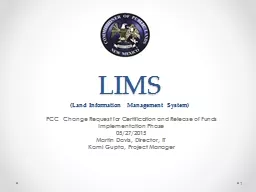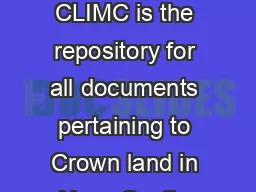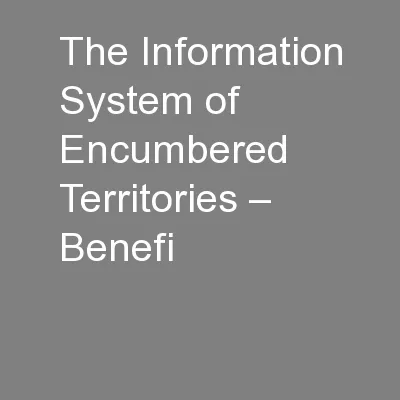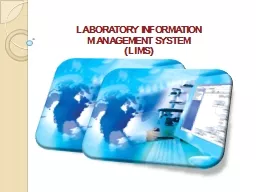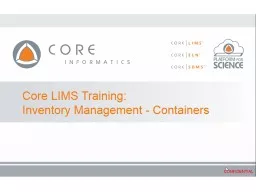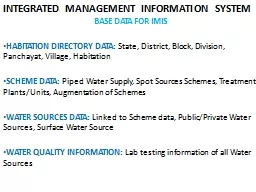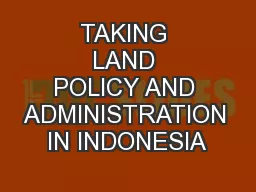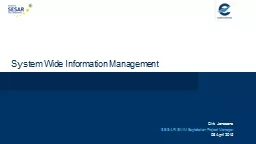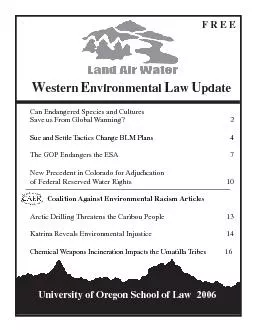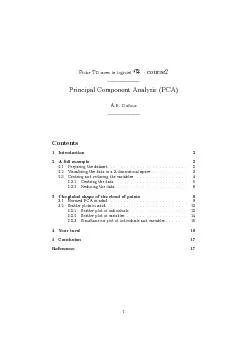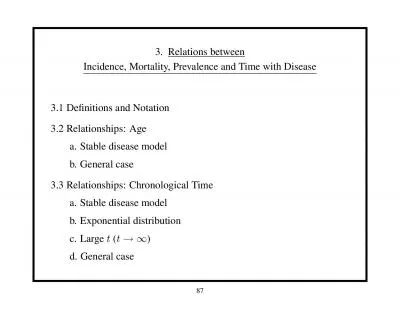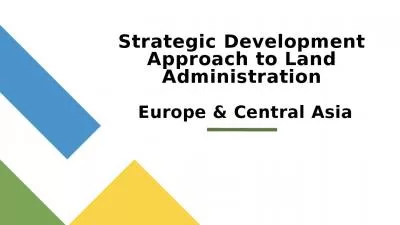PPT-LIMS (Land Information Management System)
Author : natalia-silvester | Published Date : 2020-01-24
LIMS Land Information Management System PCC Change Request for Certification and Release of Funds Implementation Phase 05272015 Martin Davis Director IT Kami Gupta
Presentation Embed Code
Download Presentation
Download Presentation The PPT/PDF document "LIMS (Land Information Management System..." is the property of its rightful owner. Permission is granted to download and print the materials on this website for personal, non-commercial use only, and to display it on your personal computer provided you do not modify the materials and that you retain all copyright notices contained in the materials. By downloading content from our website, you accept the terms of this agreement.
LIMS (Land Information Management System): Transcript
Download Rules Of Document
"LIMS (Land Information Management System)"The content belongs to its owner. You may download and print it for personal use, without modification, and keep all copyright notices. By downloading, you agree to these terms.
Related Documents

